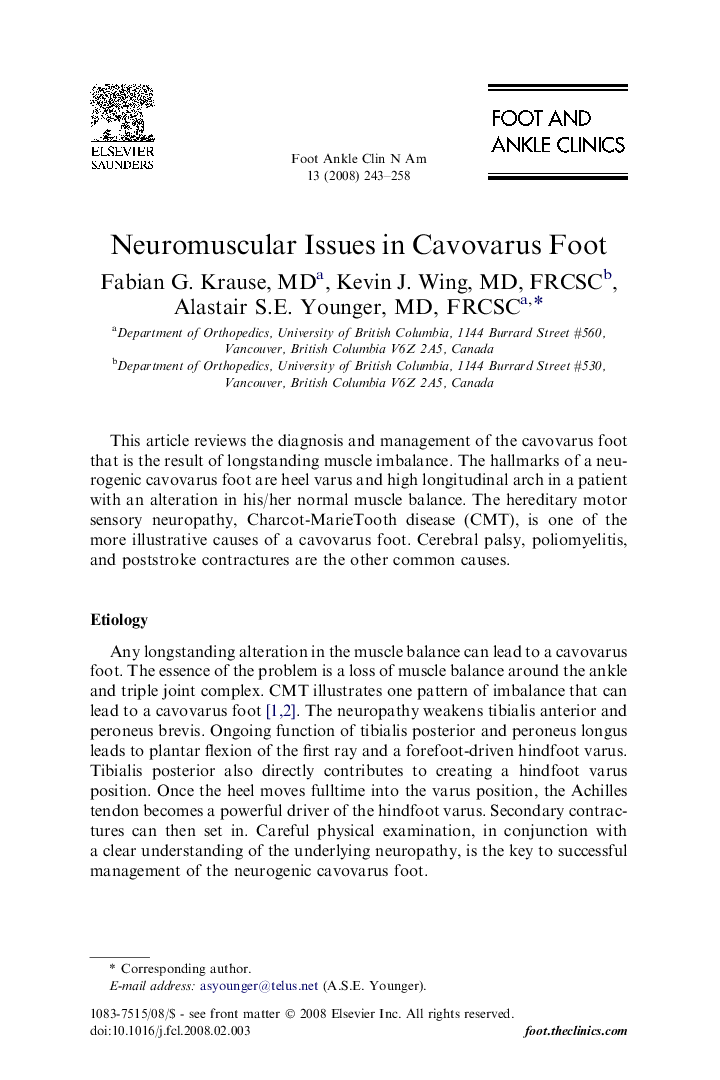| Article ID | Journal | Published Year | Pages | File Type |
|---|---|---|---|---|
| 4053986 | Foot and Ankle Clinics | 2008 | 16 Pages |
Differential muscle weakness can cause a cavus foot deformity. Presenting complaints in the hindfoot may include ankle instability, secondary arthritis, or peroneal tendonitis. Presenting complaints in the forefoot may include stress fractures, callus formation over the lateral border of the foot, claw toes, first ray overload, and metatarsalgia. More general presenting complaints can include a drop-foot gait, decreased walking tolerance, and difficulty with shoe or orthotic fitting. To surgically correct the foot shape, soft tissue contractures need to be released, bone deformity corrected, and muscles balanced to optimize their strength and prevent recurrence of the deformity. This article reviews the diagnosis and management of the cavovarus foot secondary to longstanding muscle imbalance.
